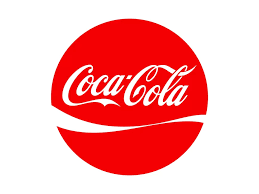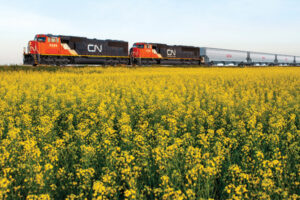Concluding our series of articles on economic moats, this week we look at the intangible assets, cost advantages, and scale efficiency factors that contribute to companies’ economic moats. Missed last week’s article? No worries, get it here.
Intangible assets
Intangible assets include intellectual property, brand equity, customer relationships, and proprietary technology.
Intellectual Property (IP)
Intellectual property is the creation of the mind that has commercial value and that is protected by law. Patents, trademarks, copyrights, and trade secrets are part of it. Coca-Cola, on top of its iconic brand, also enjoys the trade secret of making its famous beverage. Eli Lilly and Novo Nordisk can sell diabetes drugs protected by patents. In other words, no one can make the same drug as long as the patent is valid.
 Brand equity
Brand equity
Also called brand identity or recognition, brand equity is probably the easiest one to explain, but sometimes the hardest to quantify. Think about iconic brands that are known by everyone, such as Coca-Cola, Nike, Starbucks, Disney, Apple, Kirkland (Costco), McDonald’s, etc. Companies with such brands often enjoy strong pricing power and generate healthy margins.
Someone wanting to open a burger joint knows that opening a McDonald’s will bring customers instantly due to the strong brand identity. However, a strong brand doesn’t necessarily equate to high profitability. Disney has run into its fair share of problems of late even though everybody knows about Mickey Mouse and the Avengers.
Customer Relationships
Strong customer relationships translate into high customer satisfaction which should drive repeat business and word-of-mouth growth. It’s not always easy to scale customer relationships across a wide network, but I feel that most Starbucks locations offer a better service than McDonald’s or Tim Hortons (Restaurant Brands).
Proprietary technology
Proprietary technology can include software systems, algorithms, innovative manufacturing processes, or specialized tools held by a company and that are difficult for other to replicate. Texas Instruments analog chip manufacturing process or ASML photolithography systems are good examples.
Before you know it, they’re gone
 Just as they can be difficult to identify and quantify, intangible assets can also disappear quickly. Before signing a contract with Nike, Michael Jordan wanted to sign with Converse, the shoe leader in basketball at the time. To get the deal, Nike loaded the truck with advantages, benefits, and royalties. It got Jordan on board. Fast forward to today, Converse sells for $2.4B, representing 5% of its parent company… Nike!
Just as they can be difficult to identify and quantify, intangible assets can also disappear quickly. Before signing a contract with Nike, Michael Jordan wanted to sign with Converse, the shoe leader in basketball at the time. To get the deal, Nike loaded the truck with advantages, benefits, and royalties. It got Jordan on board. Fast forward to today, Converse sells for $2.4B, representing 5% of its parent company… Nike!
Cost advantage
Companies with a cost advantage are those able to produce their goods or services at a cheaper price than competitors. Costco positions itself as the biggest client of many of its suppliers to gain negotiating power and offer the lowest price to customers.
The cost advantage can be used through two different strategies:
- Crush competition with low price: For many, the easiest way to gain market share is to sell at a cheaper price than the competition. Companies that can produce the same good or service at a cheaper cost can undercut competition and lower their prices.
- Match competitor’s prices but make a lot more profit: When the business model permits, some companies (see CNQ examples below) sell at the same price as their competitors. In doing so, they generate higher margins due to their lower operating costs. They become money-making machines.
Cost advantage examples
Walmart is the perfect example of a cost-advantaged business. As a dominant retailer and among the largest grocers in the U.S., WMT built its entire business model around offering “low prices every day”. Walmart is known to squeeze every penny from its suppliers to offer the cheapest price possible to customers and crush most competitors. You don’t go to Walmart for its exceptional customer service, but rather to pay as little as possible for everyday goods.
 In Canada, think about railroad operators such as Canadian National Railway and Canadian Pacific. Railroads are one of the cheapest, in many cases the cheapest, way to transport goods across land. Since Canada and the U.S. are amongst the largest countries in the world, CNR and CPKC are quite popular. Railroads are less flexible than trucking, but they sure are less expensive.
In Canada, think about railroad operators such as Canadian National Railway and Canadian Pacific. Railroads are one of the cheapest, in many cases the cheapest, way to transport goods across land. Since Canada and the U.S. are amongst the largest countries in the world, CNR and CPKC are quite popular. Railroads are less flexible than trucking, but they sure are less expensive.
You’ll find many companies in the commodity space (materials and energy) that benefit from a strong cost advantage. One of the most common examples is Canadian Natural Resources. CNQ benefits from long-life low-decline reserves and asset base. The company produces oil and natural gas at extremely low cost. This allows CNQ to ramp up its production when prices are up to boost its margin and slow it down during down cycles yet remain highly profitable. In other words, its cost advantage makes CNQ a cash flow-making machine.
Cost advantage can be deadly
The cost advantage can be deadly for the competition. Amazon founder, Jeff Bezos, once said “Your margin is my opportunity.” While many companies, such as Barnes & Noble, thought they were doing well, and no competitor could kill them. Amazon came around with a different business model fixated on building a strong cost advantage. Barnes & Noble survived, but it’s not a flourishing business anymore.
Efficient scale
Wouldn’t it be nice if you could find a business to invest in that has little competition? Efficient scale is the advantage companies have when they operate in a market that only supports one or few competitors. Examples include utility companies, airports, telecommunications, railroads, and pipelines. In Canada, we could almost include the Big Six banks too since they exist in an oligopoly.
 When demand is filled by existing companies and the market’s growth is limited, there’s little incentive for new competitors to enter that market. Remember that Verizon once thought of entering the Canadian market but quickly decided otherwise. Rogers, Telus, and BCE handle 90% of the wireless industry in this country.
When demand is filled by existing companies and the market’s growth is limited, there’s little incentive for new competitors to enter that market. Remember that Verizon once thought of entering the Canadian market but quickly decided otherwise. Rogers, Telus, and BCE handle 90% of the wireless industry in this country.
Railroads and pipelines also have the scale advantage: there’s no point in building a new railroad or pipeline right beside an existing one to compete. The cost of construction of another transport route is prohibitive and would cause both the old and new routes to lose money.
Efficient scale is somewhat of a rare type of economic moat, and it might not last. Governments tend to dislike such business models due to the lack of competition driving prices up.
Wrap up
When you analyze stocks, look for their economic moat. Do they have one? If so, what is it built on? High switching costs, the network effect, intangible assets, cost advantages, scale, brand identity, a combination of these? You’ll be better able to assess companies’ potential to sustain their current success and for how long.








Leave a Reply